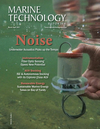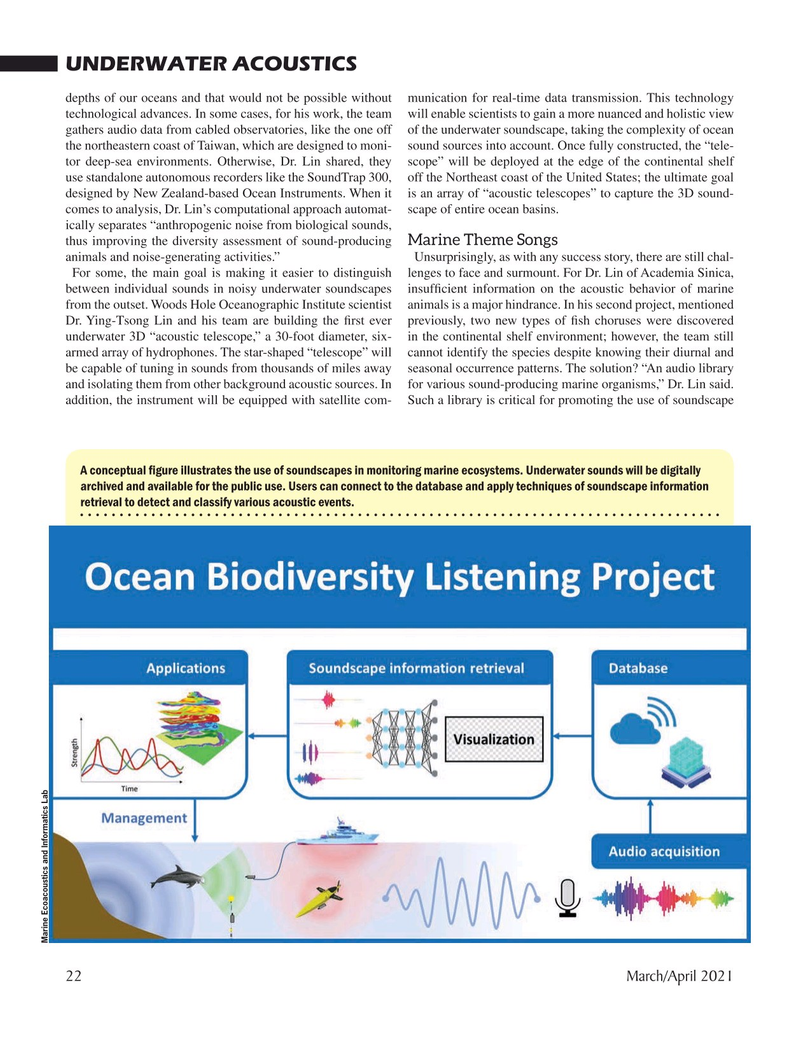
Page 22: of Marine Technology Magazine (March 2021)
Oceanographic Instrumentation & Sensors
Read this page in Pdf, Flash or Html5 edition of March 2021 Marine Technology Magazine
UNDERWATER ACOUSTICS depths of our oceans and that would not be possible without munication for real-time data transmission. This technology technological advances. In some cases, for his work, the team will enable scientists to gain a more nuanced and holistic view gathers audio data from cabled observatories, like the one off of the underwater soundscape, taking the complexity of ocean the northeastern coast of Taiwan, which are designed to moni- sound sources into account. Once fully constructed, the “tele- tor deep-sea environments. Otherwise, Dr. Lin shared, they scope” will be deployed at the edge of the continental shelf use standalone autonomous recorders like the SoundTrap 300, off the Northeast coast of the United States; the ultimate goal designed by New Zealand-based Ocean Instruments. When it is an array of “acoustic telescopes” to capture the 3D sound- comes to analysis, Dr. Lin’s computational approach automat- scape of entire ocean basins. ically separates “anthropogenic noise from biological sounds, thus improving the diversity assessment of sound-producing Marine Theme Songs animals and noise-generating activities.” Unsurprisingly, as with any success story, there are still chal-
For some, the main goal is making it easier to distinguish lenges to face and surmount. For Dr. Lin of Academia Sinica, between individual sounds in noisy underwater soundscapes insuf? cient information on the acoustic behavior of marine from the outset. Woods Hole Oceanographic Institute scientist animals is a major hindrance. In his second project, mentioned
Dr. Ying-Tsong Lin and his team are building the ? rst ever previously, two new types of ? sh choruses were discovered underwater 3D “acoustic telescope,” a 30-foot diameter, six- in the continental shelf environment; however, the team still armed array of hydrophones. The star-shaped “telescope” will cannot identify the species despite knowing their diurnal and be capable of tuning in sounds from thousands of miles away seasonal occurrence patterns. The solution? “An audio library and isolating them from other background acoustic sources. In for various sound-producing marine organisms,” Dr. Lin said. addition, the instrument will be equipped with satellite com- Such a library is critical for promoting the use of soundscape
A conceptual ? gure illustrates the use of soundscapes in monitoring marine ecosystems. Underwater sounds will be digitally archived and available for the public use. Users can connect to the database and apply techniques of soundscape information retrieval to detect and classify various acoustic events.
Marine Ecoacoustics and Informatics Lab 22 March/April 2021
MTR #3 (18-33).indd 22 3/22/2021 6:51:40 PM

 21
21

 23
23
